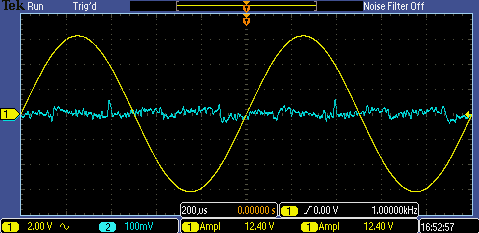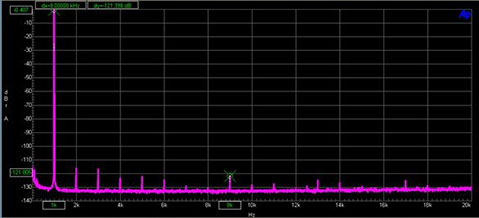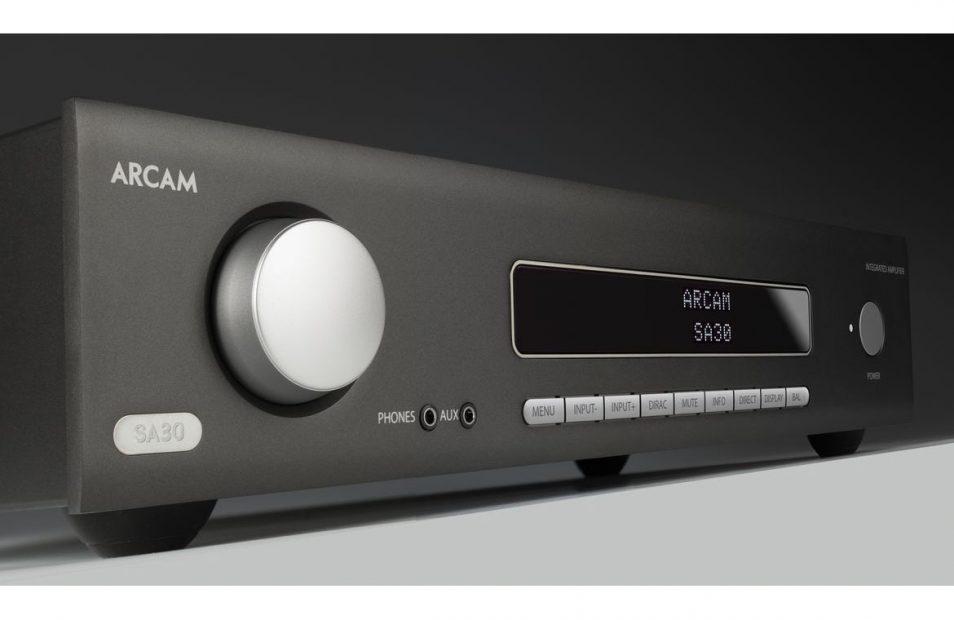Tech Talk
The Technology Behind Class G
By Nicholas Clarke – Senior Director, Global Engineering, Harman Luxury Audio Group
Harman Luxury Audio group’s Class G technology is the result of distilling 40 years’ experience of audio amplifier design into one compact state of the art package, with the aim of inaudible distortion at all listening levels within the amplifier’s power envelope, whatever the loudspeaker load.

To ensure this we aimed for THD (total harmonic distortion) of typically 1ppm (1 part per million) at power levels of up to 50W into 8 ohms, coupled with minimal high order harmonics above the relatively benign 2nd and 3rd harmonics. This is very demanding and meant effectively eliminating crossover distortion, a particularly audible type of “edgy” and “rough” sounding distortion, which affects the vast majority of class AB audio power amplifiers to a greater or lesser extent.
Crossover distortion is due to non-linearity in the output stage whenever the signal crosses through 0V and is thus present all the time, at whatever level music is played. Note the nature of the distortion is odd harmonics whose amplitude does not decrease with the order of the harmonics, so they are not masked by the fundamental signal.
At the same time, and to fit everything into a reasonable sized form-factor without intrusive cooling fans, we required greater efficiency and cooler running than competitive designs. Here two separate sets of positive and negative power supplies are used to feed the output transistors. The higher supplies are only used when the situation requires it, at the loudest listening levels and are then smoothly blended in as and when required, accurately following the envelope of the signal so that the operation is inaudible.
Class G operation illustrated
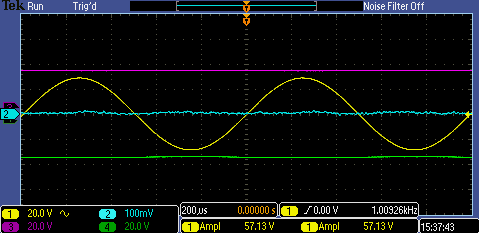
Above: Output transistor collector voltages (purple, green), output (yellow). The distortion is the blue trace. No class G operation.
Below: Output transistor collector voltages showing partial class G operation, for about 40% of the time, with a small increase in distortion due to rail switching. In the class G region about 5V is always present ahead of the output voltage to ensure linear operation.
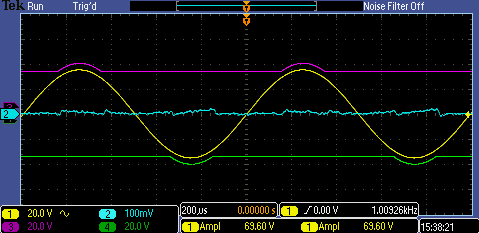
In a normal class AB amplifier there is an optimum bias current which minimises but does not eliminate variations in output impedance with output current. It is these small but relatively sharp changes which occur at low levels near the crossover point, between the NPN and PNP output transistors, which cause the insidious and audibly unpleasant phenomenon of crossover dis- tortion. The brute force way to eliminate this is to run the output stages in class A, which requires a very high standing current of several amps. This makes the output impedance virtually constant for output currents up to twice the chosen standing current but dissipates huge amounts of power at all times; this is very inefficient and requires huge amounts of heatsinking. The output stage includes a proprietary error correction circuit that modulates the modest standing currents in the output stage and ensures a near-constant output impedance. Harman Luxury Audio group’s Class G amplifiers thus behave exactly like a conventional class A amplifier up to this power level (which is specific to each model, based on many parameters such as case, heatsink and trans- former size) in terms of performance but without the heat penalty.
The lifter devices that provide the collector voltages to the output transistors (the class G part of the design) comprise matched MOSFETs per rail, mounted directly on a common anodised aluminium heat shunt for close thermal tracking. When switching be- tween the power supplies, these lifters are capable of turning on and off in well under a microsecond without misbehaving. This requires very careful PCB layout to eliminate switching artefacts.
The first pair of pictures show a Class G amplifier, now correctly biased, delivering 2W into 4 ohms. Note no distortion is discernible on the blue trace, only noise. Similarly only traces of second and third harmonics are seen on the FFT, at around -117 and -119dBr respectively:
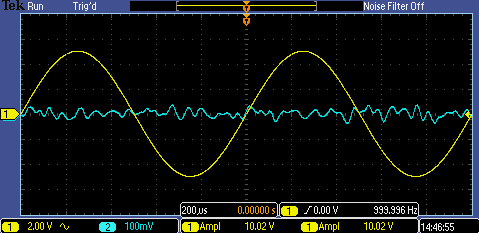
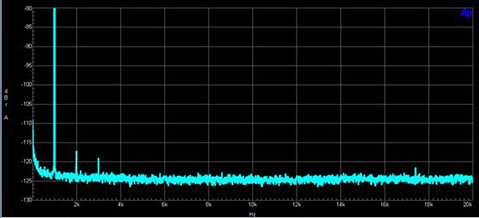
The two pictures below show the effect of the class G lifters on the residual distortion, with one channel of the Class G amplifier now running at full power into 4 ohms at 1kHz. The distortion spikes are still small and in terms of the overall THD residual, the high order harmonics contribute much less than the relatively benign 2nd and 3rd harmonics. In any case these will only occur on the loudest transients in music and will thus be totally inaudible in practice.
